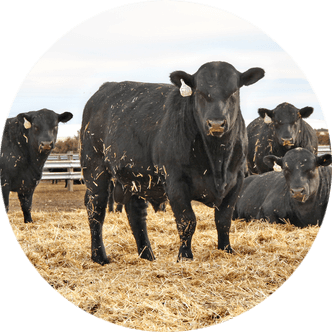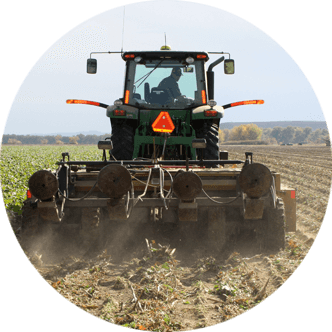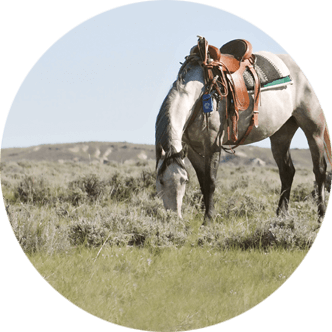Fall is an effective time to fight weeds
Since fall work on many operations usually revolves around livestock – trailing pairs home from summer pasture, putting up the last of the hay to feed in coming winter months and weaning and shipping calves, yearlings and lambs – it is often easy to overlook another practice best implemented during the season’s shorter, colder days – weed management.
For producers and other landowners fall proves an effective window for treating some of the most hard-to-control noxious weeds across the Cowboy State.
Why fall works
According to multiple sources, including a 2006 article by former Natrona Country Weed and Pest Control District Education Coordinator Brian Connely in the University of Wyoming’s (UW) Barnyards and Backyards publication, fall gives individuals a biological advantage since many hardy plants tend to reallocate resources at this time and are therefore at their most vulnerable.
Connely explains, as days shorten and weather cools, many problem perennial plants send the carbohydrates they are actively producing – as well as anything sprayed on their foliage that translocates – down into crowns and roots for winter storage.
A timely application of systemic herbicides while the plant is moving resources around increases the chance chemicals will reach and subsequently kill parts of the plant that exist below ground.
Additionally, the U.S. Department of Agriculture’s Natural Resources Conservation Service (NRCS) notes many biennials and winter annuals are also easiest to control before soil freezes or in early spring when seedlings or rosettes are small.
Weed management practices
Many experts note using proper timing to control weeds results in long-term success when used as a part of an integrated, site-specific management plan.
NRCS encourages individuals to time treatments based on plant biology and the local climate, aiming for late-summer to October for broadleaf perennials and late-fall or early-spring for biennials and annuals.
The agency suggests using a combination of cultural, mechanical, biological and chemical control methods.
“For rangeland and conservation sites, grazing management, reseeding desirable species, targeted moving and biological agents – where approved – reduce weed competition and reliance on herbicides,” states NRCS.
The agency further recommends planning multiple treatments per year rather than one-off sprays, and notes the importance of choosing the correct herbicide for targeted species and season of treatment.
For perennial broadleaves, systemic herbicides applied in the fall are often more effective because the active ingredient moves to the roots. Labels, local Extension guides and NRCS documents should guide an individual’s choice of chemical, spray rate and tank mix.
NRCS notes treatment should be prioritized in areas where it will “do the most good,” including newly-invaded patches, along roadside ditches and other places where weeds threaten habitat, grazing ground or seed production.
“After reducing a weed’s seedbank and root reserves, reseeding competitive grasses and forbs or adjusting grazing and/or fertilization improves long-term resilience and reduces re-invasion risks,” NRCS says.
Additionally, NRCS recommends buffering waterways, avoiding spraying during windy conditions and following label instructions and restrictions to protect pollinators and non-target plants.
Individuals should also keep records of when and where they treated, what they used and results observed the next season.
Wyoming weed control
Across the West, invasive weeds are more than an eyesore. They reduce forage and habitat, impact fire behavior and cost money to treat.
With a strategic plan of action, Wyoming producers and land stewards are able to reduce infestations, cut costs over time and protect lawns, meadows and rangelands from damaging invaders.
Specific to Wyoming, these include perennials like leafy spurge, Russian knapweed, Canada thistle, dalmation toadflax and field bindweed, as well as annuals and biennials like cheatgrass, houndstongue, Scotch thistle, musk thistle and black henbane.
Connely notes leafy spurge treated in the fall with imazapic has shown promising results, while treating Russian knapweed and Canada thistle with picloram or clopyralid/triclopyr has proven effective.
“Imazapic can also be used on Russian knapweed in a very late-fall timing,” he adds. “And dalmation toadflax is difficult to control with herbicides. However, a late-fall treatment with imazapic has shown excellent results.”
For field bindweed, Connely recommends a late-fall treatment with a strong rate of glyphosate.
“Control of annual and biennial weeds involves limiting seed production,” Connely explains. “Deadheading – cutting off and disposing seed heads – annual and biennial weeds missed in the spring or even mowing with a grass-catcher attachment works to harvest weed seeds. Missed biennial weeds can also be dug up and disposed of.”
Cheatgrass remains at the top of the priority list for many producers and landowners in Wyoming. In fact, a 2024 research study conducted by UW quantified economic impacts of invasive weeds and placed cheatgrass among the top threats, with projected losses exceeding $110 million annually if left unmanaged.
Connely points out prevention of cheatgrass is key, and mitigation strategies may include preventing overgrazing and severe land disturbance from excavation and/or construction, fire and traffic, as well as “overzealous applications” of non-selective herbicides like glyphosate.
He also notes, in cheatgrass-infested areas with a good stand of desirable plants, imazapic has shown promising results for cheatgrass control.
Hannah Bugas is the managing editor of the Wyoming Livestock Roundup. Send comments on this article to roundup@wylr.net.





